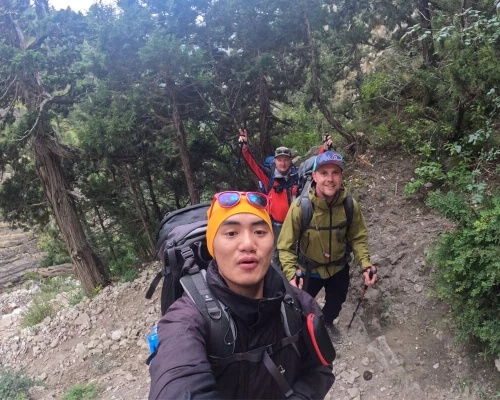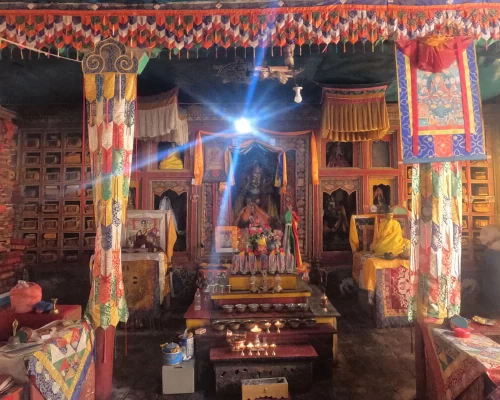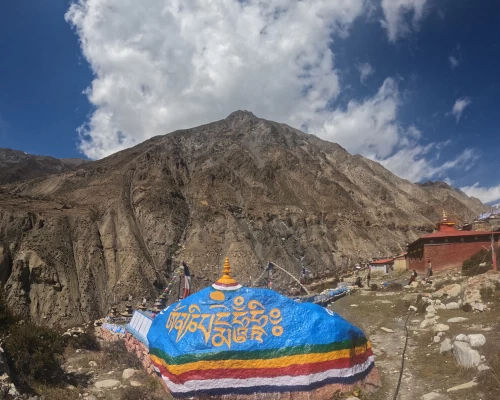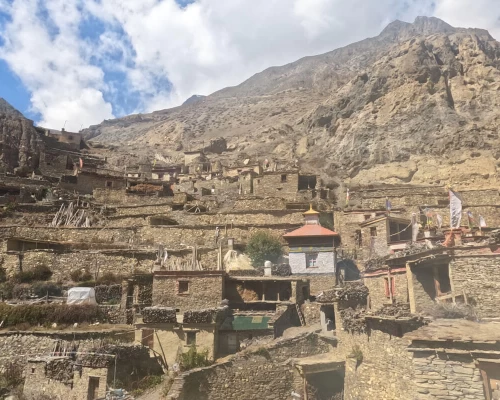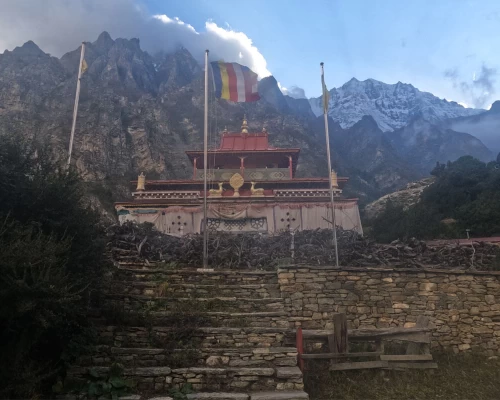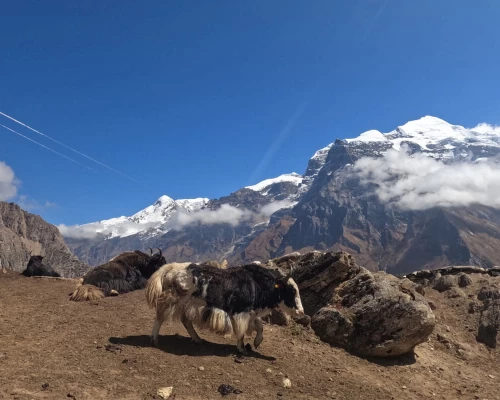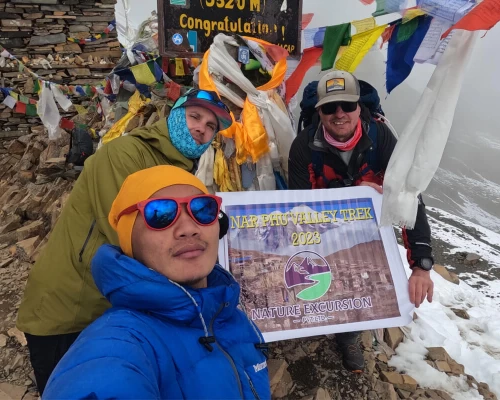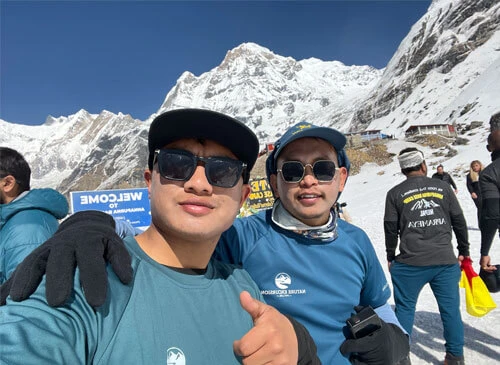Short Introduction of Nar Phu Valley Trek
The Nar Phu Valley is like a secretly hidden jewel of Nepal that has not been discovered like other trekking areas yet. It lies in the Annapurna region, which gives you the remote trekking experience in the Himalayas, remote villages, traditional history-carrying places, and amazing landscapes. This short Nar Phu Valley trek of 9 days takes you to the heart of hidden regions with limited access and provides you the opportunity to explore the raw natural beauty.
If you have limited time and want to learn and experience the ancient Tibetan villages and the surreal beauty of the Nar Phu Valley, this 9-day trek itinerary can be a fulfilling trekking journey. You can dive into the cultural richness of the people following the Tibetans living in this part of this region.
This short Nar Phu Valley trek begins from the village named Koto in the Annapurna region. You start your trek in between the dense pine forests, which ends at Nar and Phu valleys. You can see the prayer flags decorated in the trekking trails and the villages.On ascending, you can witness the heart-melting views of the majestic Annapurna and Manaslu ranges. You can see the greenery landscapes at lower regions and the desert-like landscapes at higher regions of this trek.
The Nar Phu Valley trek is rich in culture as well as natural beauty. You can totally dive into the remote culture and tradition, which adds to the spiritual richness of your trek. You will get to visit many years-old monasteries, Buddhist shrines, and ancient Tibetan-style houses. The highlight of this trek is the pass situated at a height of 5,306 meters above sea level, named Kang La Pass, which offers you the captivating views of the Annapurna ranges, Manaslu, and Lamjung Himal.
What to expect on the Nar Phu Valley Trek 9 days?
The 9-day trek to Nar Phu Valley provides you with a mixture of gorgeous natural beauty and traditional cultural beauty. You can expect the diverse landscapes during the trek because the scenery changes dramatically as you ascend. You will be crossing the suspension bridges and the waterfalls, which take you into the remote valleys of Nar and Phu.
This trek can challenge you physically to some extent, but you will get to enjoy the natural views if you are well prepared. This trek is also a journey to mental peace and spiritual experience far away from the hustle and bustle of modern world life. Talking about the accommodations during the trek, it is basic but comfortable, and the food over there is wholesome and satisfying.
Who can do the short Nar Phu Valley trip?
This short Nar Phu Valley trek of 9 days is suitable for anyone having a moderate level of physical fitness. It is important to be prepared properly with good physical fitness, as you will be trekking in remote areas and high-altitude places. Let’s discuss furthermore about this:
- As the trek has steep uphill and downhill, you should be fit enough to walk comfortably for several hours a day.
- If you are a newbie trekker, you need to practice gaining leg strength and doing cardiovascular exercises by going on short hikes three months prior to the short Nar Phu valley trek so that you can build your endurance.
- You should be prepared for the high altitude trekking above 3,000 meters, and this trek is above 5,000 meters, so you should be aware of the risk of altitude sickness and prepare accordingly.
- The Nar Phu Valley Trek is a journey to the remote area and experiencing their way of living and cultures, so there is limited access to accommodations and facilities, and you should be fully mentally prepared for this.
How to get prepared for the Nar Phu Valley 9 days trek itinerary?
Although this trekking route is both challenging and adventurous, you can prepare yourself well in advance by starting short hikes and doing daily exercises about three months before your trip. It's important to learn how to adapt to the changing environment and understand ways to deal with high-altitude issues so you can reduce any difficulties during the trek.
You should make sure to bring all the necessary documents for getting permits and trekking along the Nar Phu valley. It’s also a good idea to familiarize yourself with the short Nar Phu Valley Trek 9-day itinerary. At Nature Excursion Pvt. Ltd., we provide complete details about the cost, itinerary, and details for the 9-day Nar Phu Valley trekking experience.
You should gather as much information as possible about the trekking route, weather conditions, and the rules and regulations of the area before you start. Since emergencies can happen, it's always smart to carry extra Nepali cash with you to cover unexpected costs during the trek.
Is it the correct decision to choose the short Nar Phu valley trekking?
If you like to choose the short Nar Phu valley trekking, it is definitely a great decision, especially if you are seeking the trekking destination and route to be less crowded with peaceful trekking experience in Nepal. This trek is all about experiencing the best of the best ancient village lifestyles, which are full of Tibetan culture, along with the speechless snowy mountain views. It is not only about the good trekking experience; it is also about the feeling of being in the high-altitude traditional villages with amazing mountain views.
This will undoubtedly be the supreme first-hand experience of trekking in the Annapurna region of Nepal. This is a less explored trekking place with untouched views of the Himalayas. You will be exploring the least seen ancient caves, old Buddhist monasteries, and rugged dramatic landscapes. If you have less time and want to experience a place with the enthrall beauty of nature, this short Nar Phu valley trekking is perfect for you.
Why should you choose us for the 9-day Nar Phu Valley trekking experience?
Before setting off on a trek in Nepal, the first and most important step is choosing the right trekking agency. Since trekking alone is not allowed in most regions, it’s essential to select a reliable agency for your safety and to have an experienced guide. When visiting a foreign country, proper trip planning is crucial, and Nature Excursion Pvt. Ltd. is here to guide you throughout your trek.
Your safety is our top priority, as you are the guest in our country, Nepal, and we believe in the saying "Atithi Devo Bhawa," which means guest is our god. We want to make sure you feel secure and satisfied in every way. Our goal is to make your trekking experience both enjoyable and memorable. We will provide you with a knowledgeable, local mountain guide who speaks fluent English and can easily communicate with both you and the local villagers. We also offer a flexible itinerary and complete details about the Nar Phu Valley trek's 9-day' cost.
There are many pros to joining us for your short Nar Phu Valley Trekking 9 days, such as
- Free pick-up and drop-off services from Tribhuvan International Airport
- Rental of sleeping bags, duffel bags, and down jackets (to be returned after the trek)
- A complimentary company t-shirt
- A certificate of appreciation after completing the trek
- Experienced and skilled mountain guides
- Medical support and helicopter rescue services (covered by your travel insurance)
- A first-aid kit and an oximeter for health checks during the trek
- Free luggage storage during your trek
- A special farewell dinner at the end of your adventure
- We make sure to provide the best experience with a well-organized, safe, and fun trek.

.webp)
-(1).webp)

